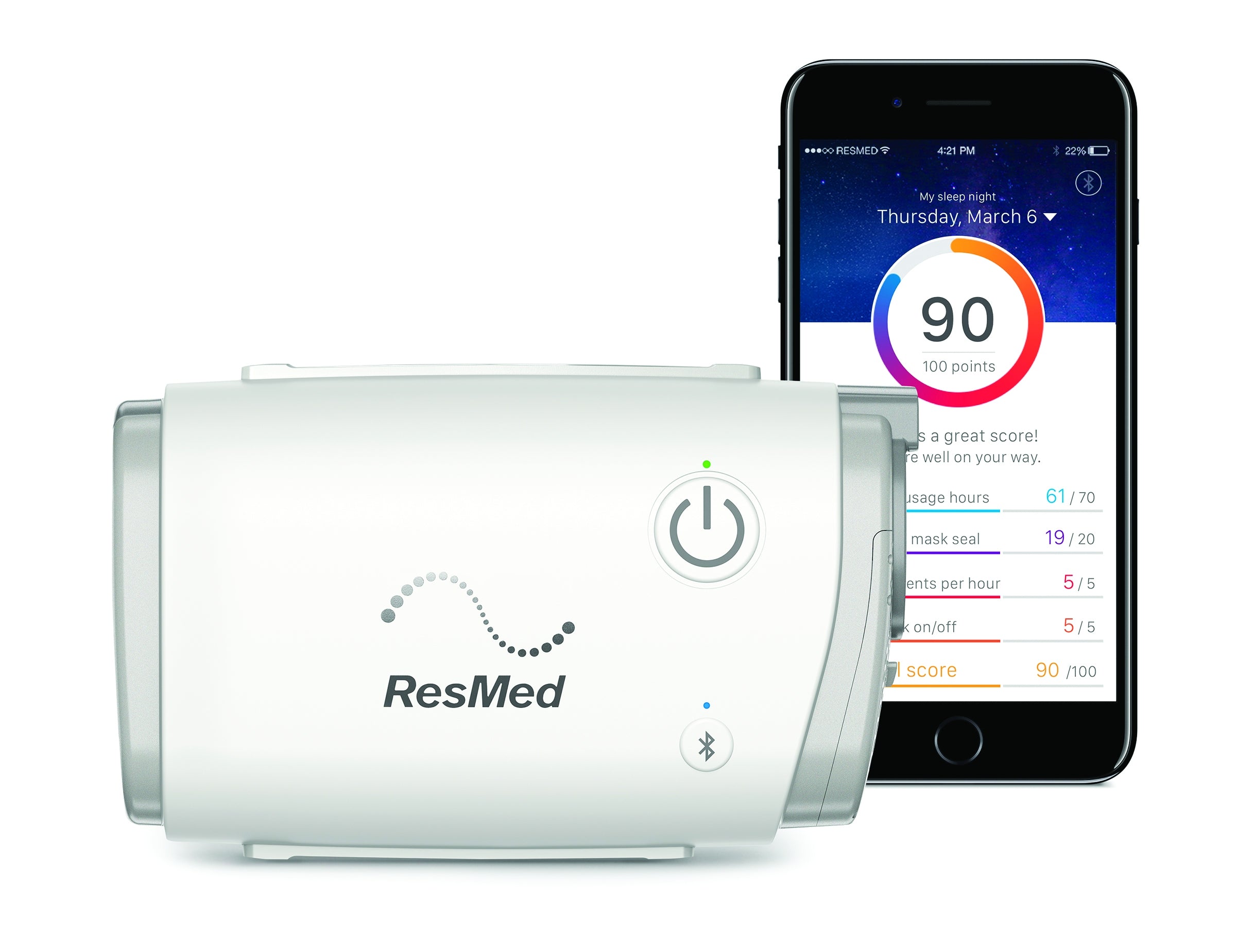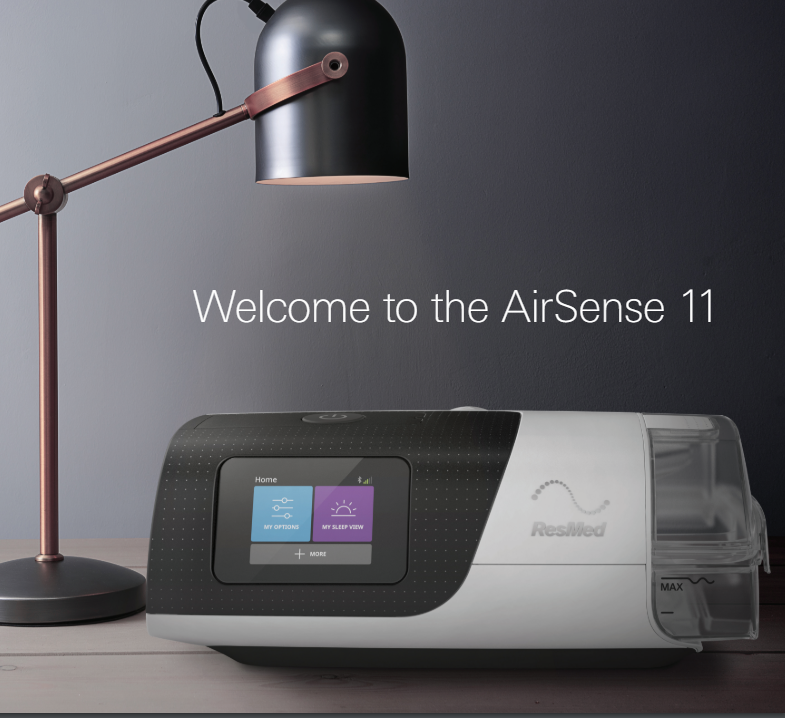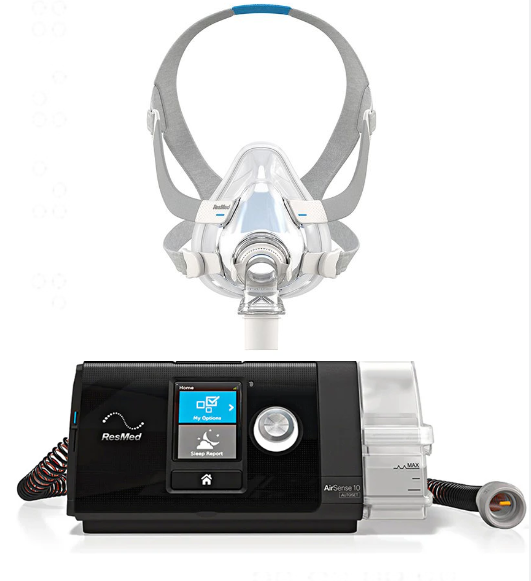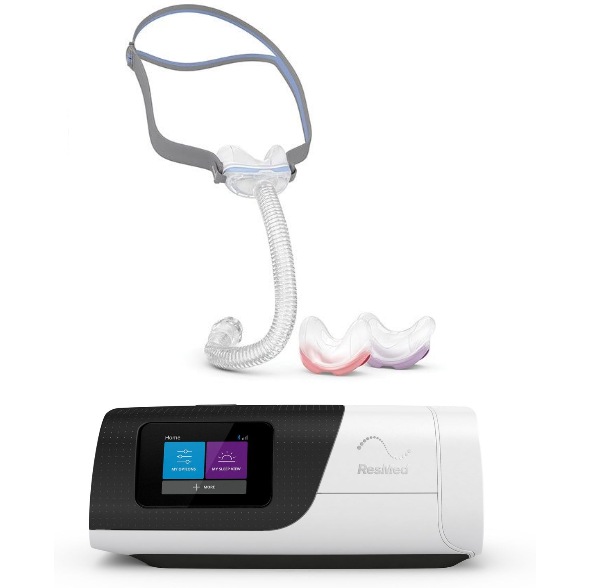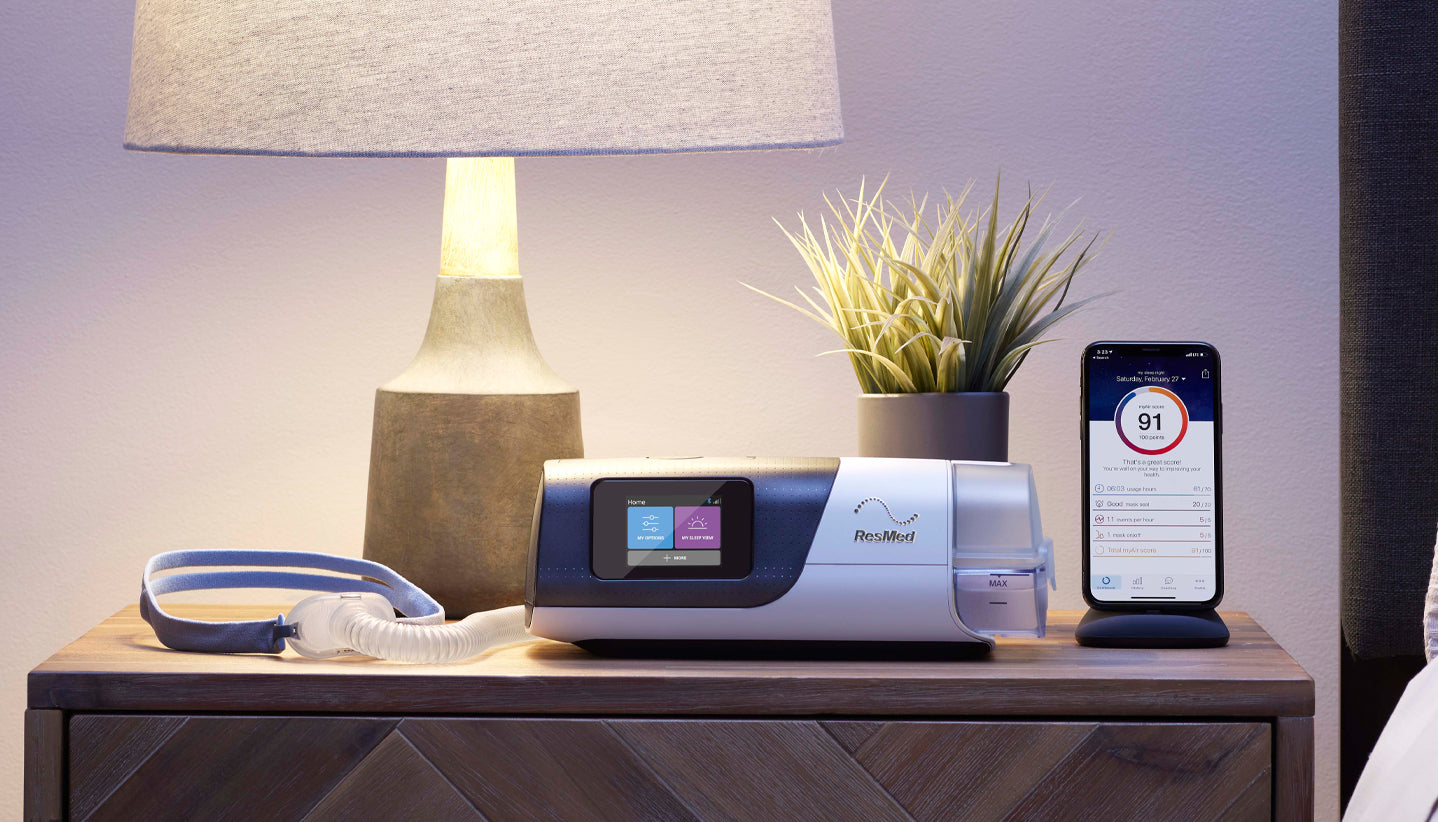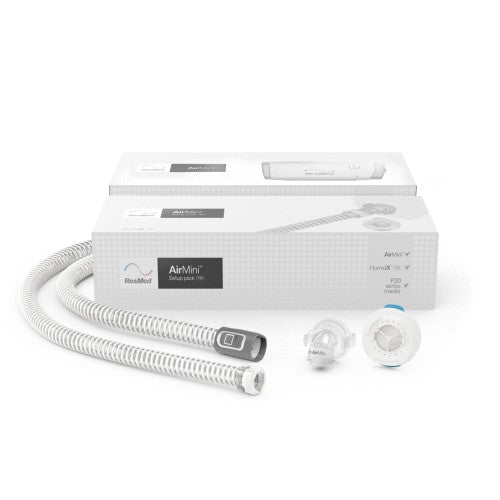Frequently Asked Questions
When should I replace my CPAP machine?
Your CPAP machine should be replaced after approximately 5 years of use. Machines come with 3 years manufacture warranty on the motor and have a lifespan of about 5 years. Getting a new CPAP machine is also an opportunity to take advantage of new comfort features and technology that may not have been available when you received your current machine.
What is the difference between CPAP, APAP and BiPAP?
There are three main types of positive airway pressure therapy. All three types of machines treat the symptoms of sleep apnea using pressurized air to keep airways open during sleep. The difference lies in how they deliver pressure into airways and their level of adjustability. Determining which one is right for you depends on your specific condition and your doctor’s recommendation.
Continuous Positive Airway Pressure (CPAP)
CPAP machines provide a continuous flow of air that pushes into your upper airway and lungs through a mask that covers your nose, mouth, or both. This pressure helps hold your airway open, keeping it from narrowing or collapsing, which prevents effective breathing during sleep.
Automatic Positive Airway Pressure (APAP)
APAP machine automatically adjusts positive airway pressure, it uses special technology to identify when a person snores or begins to experience a breathing disruption. Once it detects a change in breathing, the machine increases the air pressure to help keep the airway open. Similarly, the machine decreases the rate of pressure when it detects that a higher rate is no longer needed.
Bilevel, or Variable Positive Airway Pressure
(BiPAP/VPAP)
BiPAP machines can be set to different pressures for inhalation and exhalation. This can make it easier to breathe out against the incoming air and can be particularly helpful for people with certain conditions. This added capability makes BiPAP machines more expensive. BiPAP is generally used for more complex or advanced sleep apnea treatments, including cases involving higher-pressure settings, combined central sleep apnea and obstructive sleep apnea (OSA), or conditions like chronic obstructive pulmonary disease (COPD).
What is the difference between standard and heated tubing?
Heated CPAP tubing, such as the ClimateLine tubing, contains built-in copper coils that are gently heated to maintain a consistent temperature throughout the hose. This helps prevent rainout (condensation in the tubing) by keeping the air temperature stable, reducing discomfort from moisture buildup. Standard CPAP tubing is thinner and more flexible, offering greater freedom of movement in bed but without the temperature regulation benefits of heated tubing.
The Auto Climate Control feature is only available when using heated tubing (ClimateLine) with either the AirSense/Air Curve 10 or 11.
What is Ramp?
The ramp setting on a CPAP machine gradually increases the air pressure from a lower level to the full pressure over a set time. This makes it easier to fall asleep without starting at the full pressure right away. It usually takes between 5 to 45 minutes to reach the full pressure. Ramp settings are particularly useful for people who find it uncomfortable to breathe against a high pressure right away. Once asleep, the machine will maintain the required pressure throughout the night to ensure proper airway support.
What is the Humidity setting?
The AirSense/AirCurve 10/11 features a heated humidifier that adds moisture to the air delivered through your CPAP mask, helping to prevent dryness and irritation in your nose and throat, especially in dry environments. The Humidity setting can be adjusted from 1 (lowest) to 8 (highest), or turned off. If you're experiencing dryness in your nose or mouth, increase the humidity. If you're getting moisture in your mask, lower the setting.
The Auto Climate Control feature is available only when using the ClimateLine heated tubing with either the AirSense/AirCurve 10 or 11. This automatic mode adjusts both the temperature and humidity based on room conditions to prevent rainout (condensation in the tubing). If you're using non-heated, traditional CPAP tubing, the Automatic mode will not appear as an option in the humidifier settings.
How often should I clean my CPAP equipment?
Regular cleaning of your CPAP equipment is just as important as using it. Germs from your skin can transfer to the mask and hose, and dust, mold, or allergens can build up. Cleaning your CPAP parts helps prevent harmful germs from growing. The warm, damp environment in the hose is perfect for bacteria and mold, which can cause infections like sinus issues or pneumonia if not cleaned. Below is the recommendation
of how to clean each part:
Mask
To clean your CPAP mask properly, start by disassembling it into three parts: the headgear, cushion, and frame. Clean the cushion daily and the headgear and frame weekly. In a sink or bowl, use mild liquid soap and warm water to gently wash each part, removing any oils. Rinse thoroughly with warm water, then place the cushion, headgear, and frame on a towel on a flat surface to air-dry, or hang the headgear and frame on a hook or hanger. Avoid exposing any parts to direct sunlight. As an alternative, you can use CPAP mask wipes for daily cleaning of the cushion.
Water Chamber
Once a week, fill a sink or bowl with warm water and mild liquid soap. Disassemble your water chamber and soak it for a few minutes. Use a small brush or cloth to ensure all corners are thoroughly cleaned. Place the water chamber on a flat surface on top of a towel to dry, avoiding direct sunlight. If you have the cleanable version of the ResMed water chamber, it is dishwasher safe on the top rack. Each morning, any leftover water should be emptied, the chamber lightly rinsed, and then left to air dry. It is recommended to use distilled water only.
Hose
Once a week fill a sink or bowl with warm water and mild liquid soap. Submerge your CPAP hose and let it soak for a few minutes. Swish the soapy water through the hose several times, then rinse thoroughly with clean water.
For a deeper clean, consider using a CPAP hose brush. Hang the hose over a shower bar or similar rod while cleaning. Insert the brush into one end of the hose and carefully push it through to the other end. Move the brush back and forth a few times to remove any buildup. If it’s tricky at first, wet the bristles and add a small drop of soap to help the brush slide through more easily.
To dry the hose, leave it hanging over the shower bar, allowing the water to drain out completely.
Filter
Filters for ResMed machines are not washable and should be replaced monthly. Respironics machines have both disposable and reusable filters. The disposable filter should be replaced monthly, while the reusable filter should be washed 1-2 times per week under running water. The disposable filter should be replaced every 6 months.
Device
To keep your CPAP device clean, use a cloth to wipe away any dust as needed. A dry microfiber cloth is ideal but, if necessary, you can use a slightly damp cloth—just make sure it is only very mildly damp to prevent any water damage to the machine.
How often should I replace my CPAP accessories?
Below is the manufacturer's guideline for replacing CPAP accessories. It’s important to regularly inspect your accessories for signs of wear and tear and replace them as needed.
- Complete mask system: Every 6-12 months
- Silicone mask cushions (full face, nasal, and nasal
pillows): Every 3-6 months - Memory foam mask cushions: Every month
- Humidifier water tub: Every 6-12 months
- Filters: Every month
- Tubing: Every 3-6 months
Is a prescription required?
Yes, a valid CPAP prescription is required to purchase a CPAP, APAP, or BiPAP machine. If we do not already have your prescription on file, please email your prescription to info@cpapoutlet.ca or have it faxed to 1-855-571-7634 along with your order number. If a valid prescription is not provided your order may be canceled. Note that a prescription is not necessary for CPAP masks, parts, or accessories.
Can I use my CPAP machine while traveling?
All machines displayed on our website can operate all over the world. The universal power supply is rated from 100-240 V, 50-60 Hz and can be used without a voltage converter. An international plug adaptor may be required to make your power cord compatible with the power outlets of the country to which you are traveling.
Which mask is compatible with my machine?
CPAP masks are universally compatible with all CPAP machines, regardless of the manufacturer, except for the ResMed AirMini, which requires specific mask options. This allows you to choose any mask and machine combination to suit your comfort and lifestyle. However, we do not recommend purchasing a new mask for the first time online. It’s best to visit a local CPAP store where you can try on different masks to ensure the best fit and comfort before making a purchase online.
Which masks are compatible with the ResMed AirMini?
The AirMini is compatible with the following masks:
- AirFit N30 for AirMini (SKU: 38878)
- AirFit P10 for AirMini (SKU: 38824)
- AirFit F30 (with special connector, SKU: 38010)
- AirFit F20/AirTouch F20 (with special connector, SKU: 38011)
- AirFit N20/AirTouch N20 (with special connector, SKU: 38823)
Does the AirMini offer humidification?
Yes, the AirMini has three waterless humidification options:
- HumidX
- HumidX Plus
- HumidX F20
HumidX and HumidX Plus work with compatible nasal and nasal
pillow masks.
HumidX F20 works with the F20 series full face masks.
Note: Waterless humidification is not available when using the AirFit F30 mask.
Once HumidX or HumidX Plus are opened, they have a 30-day shelf life only and must be disposed of after that.
What is the difference between the AirSense 10 and AirSense 11?
The AirSense 11 features a sleeker, more modern design, making it smaller, lighter, and slightly easier to travel with. It uses a 65-watt power supply, down from 90 watts in the AirSense 10, improving energy efficiency while maintaining the same performance. The device also includes the Personal Therapy Assistant in the myAir app, which offers video and written support to help users set up and adjust to therapy. Additionally, the Care Check-In feature in the app provides coaching and support for the first month to encourage therapy adherence. The AirSense 11 can receive remote software updates and fixes, eliminating the need for in-person visits. One major upgrade is the inclusion of AutoSet for Her, a feature that was previously available only on a separate machine (which has since been discontinued by ResMed). This feature is designed specifically with women’s unique airflow needs in mind, but it is suitable for anyone looking for optimized therapy.
Does the AirSense 11 or AirSense 10 work without water or a humidifier?
Yes, both the AirSense 11 and AirSense 10 can work without water or a humidifier. To turn off humidification, go to the "My Options" menu, select "Climate Control," and set it to manual. Then, set the "Humidity Level" to "Off" and, if using heated tubing, set the "Tube Temp" to "Off" as well. Even without the humidifier, you must keep the humidifier chamber in place for the machine to function properly. Alternatively, you can purchase an optional side cover from ResMed to block the humidifier inlet, allowing air to bypass the water chamber.
What is the noise level of the AirSense 11 compared to the AirSense 10?
Both the AirSense 10 and AirSense 11 are very quiet, with sound outputs of about 27 decibels and 26.6 decibels, respectively. The AirSense 11 is slightly noisier at 27 decibels, but in practice, the difference is hardly noticeable. Both machines are considered to be among the quietest CPAP machines, operating at a whisper-quiet level.
What is the noise level of the AirMini?
29 dBA with an uncertainty of 2 dBA (Note: Travel units are
typically noisier than regular units).
Who sets the pressure on my CPAP machine, and how do I know if it's the right pressure for me?
The pressure on your CPAP machine is set according to your prescription before it is shipped out. Since all CPAP machine purchases require a prescription, the device will be calibrated to the prescribed pressure. If you find that you’re not tolerating the pressure or feel it’s not right for you, you should follow up with your doctor to discuss possible adjustments. If your doctor updates your prescription, you can send us the new one, and we will assist you in adjusting the settings accordingly.










